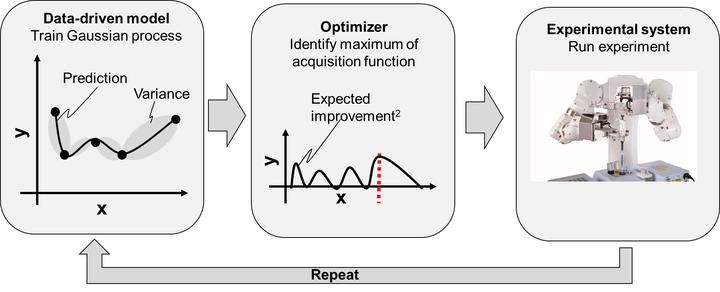Self-optimization

Autonomous reaction platforms and robots are the future of chemistry and biotechnology laboratories.
Already, they can find optimal reaction conditions for small-dimensional continuous variables, such as temperature and pressure, through machine learning algorithms Discrete solvent selection through continuous descriptors has also recently been considered.
Key publications
- Schweidtmann, A. M., Clayton, A. D., Holmes, N., Bradford, E., Bourne, R. A., & Lapkin, A. A. (2018). Machine learning meets continuous flow chemistry: Automated optimization towards the Pareto front of multiple objectives. Chemical Engineering Journal, 352, 277-282.
- Amar, Y., Schweidtmann, A. M., Deutsch, P., Cao, L., & Lapkin, A. (2019). Machine learning and molecular descriptors enable rational solvent selection in asymmetric catalysis. Chemical science, 10(27), 6697-6706.
- Clayton, A. D., Schweidtmann, A. M., Clemens, G., Manson, J. A., Taylor, C. J., Niño, C. G., … & Bourne, R. A. (2020). Automated self-optimisation of multi-step reaction and separation processes using machine learning. Chemical Engineering Journal, 384, 123340. [Clayton et al., 2020]
- Jose, N. A., Kovalev, M., Bradford, E., Schweidtmann, A. M., Zeng, H. C., & Lapkin, A. A. (2021). Pushing nanomaterials up to the kilogram scale–An accelerated approach for synthesizing antimicrobial ZnO with high shear reactors, machine learning and high-throughput analysis. Chemical Engineering Journal, 426, 131345.